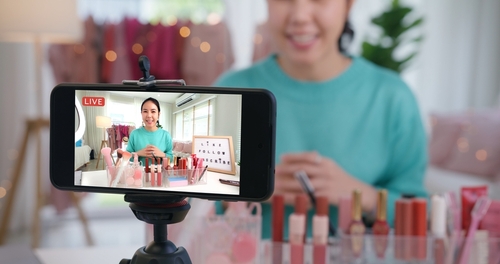Who wouldn’t want to be an influencer? Influencers can build a community of like-minded people, develop a unique perspective on an industry or topic, and create a body of content– typically visually beautiful content– around that area of expertise. Influencers monetize their work through brand partnerships, helping companies with a product or service access their (the influencer’s) audience.

So, how to become an influencer? Some people may look at the follower counts of well-regarded influencers and feel deterred: how long would it take to amass 500K followers? (Answer: a long time)
How Many Followers Does a Micro Influences Has?
The good news is that the structure of influencer marketing is undergoing a huge shift. Micro-influencers and nano-influencers are wielding more influence, especially when it comes to influencing the purchasing decisions of their followers.
- A micro-influencer is an online personality with 1,000 to 10,000 followers.
- A nano influencer has 1,000 or fewer followers
There is an emerging school of thought that we are all nano-influencers and that a new commonplace side hustle will take the form of everyday people earning side income by recommending products to their friends.
(In fact, at Ambassador, we feel strongly that individuals earning referral marketing revenue by recommending products to their friends, family, and online followers are going to be a common, completely desestigmatized way that people make money over the next ten years)
With this mindset, becoming a micro-influencer isn’t at all an uphill battle. It’s about creating content you enjoy creating, getting better at what you’re best at, and building trust within your micro-influencer community. Let’s look at the fundamentals of building a micro-influencer platform with a unique point of view:
1. Define your unique perspective.
It’s best to define a niche as an influencer so you can easily stand out from the crowd and attract the people who want what you’ve got. For example, instead of planning a platform as a fashion influencer, you may want to niche down by influencing around “dressing for a pear-shaped figure” or “wearing something secondhand every day.” Instead of building a platform around “mental health awareness,” consider a specialized platform like “the impact of fitness and strength training on mental health.” Naturally, you want to pick a topic that you’re genuinely passionate about and are willing to devote hours a week to developing content. Having a laser-sharp focus helps you describe why your platform is special, attracts a community of people who are very interested in what you’re influencing around, and sets you apart from more general accounts in your space that may feel less compelling because they don’t have a specific point of view.
2. Select the social media channel where you’ll concentrate your efforts.
Many influencers decide to invest most of their energy in building content on one specific platform– Twitter, Instagram, YouTube, or TikTok, typically–and use the other platforms (as well as Facebook, Pinterest, and Substack) to supplement their platform or share content that wouldn’t be a good fit for their preferred channel. Think about what kind of content you most enjoy creating– quick videos, videos that require editing, the written word, photos–and decide what platform makes the most sense for you to devote most of your time.
Once you decide on a handle, make sure to reserve your handle across all of the social media platforms.
3. Write a compelling bio.
Writing your bio will be a little easier if you spend some time thinking about your unique perspective or your niche. How do you sum up your unique perspective and why people should follow you in just a few words? A helpful exercise is to write a bio that is a few sentences and keep cutting until you reach the right word count. Another helpful exercise is to think about how you want other people to describe your account and reverse-engineer how you describe yourself to your prospective followers using the language you hope they’ll use when they evangelize you to others.
4. Decide whom you want to reach.
Who is your audience member? Spending time clarifying who you want to reach is an important, often-skipped aspect of building a micro-influencer platform. Think about what is unique about your platform and who the buckets of people are who will find your work interesting. What do those people spend money on? How much money do those groups have to spend on non-essentials? (Approaching your micro-influencer platform as a small business and making sure that you’re planning with revenue in mind is important) Creating content and planning your platform with this clarity will give you an advantage: your work will be more shareable, and the people following you will be more likely to purchase the recommended products.
5. Select a color scheme.
Picking a few like colors that are on brand for your budding platform is what sets social media users who create content apart from nano influencers. A color scheme makes your feed recognizable; in time, when your followers share your posts, their followers will start to associate your color scheme with you. Having a color scheme lends polish to your work and serves as the DNA of your online nano influencer brand. Naturally, ensure your color scheme and the fonts you regularly use reflect the content you’re posting.
The time you spend getting clear on your unique perspective, whom you want to reach, and how you will make your account stand out is well spent if you want to become a micro-influencer.
In Part II of this exploration of how to become a micro-influencer, you’ll learn how to build upon this strong foundation to grow your follower count, build trust with your audience, and earn money as a micro-influencer by driving sales to worthwhile brands and products. Stay tuned.
Unlock growth with referrals—request your free demo today and see the impact firsthand!
